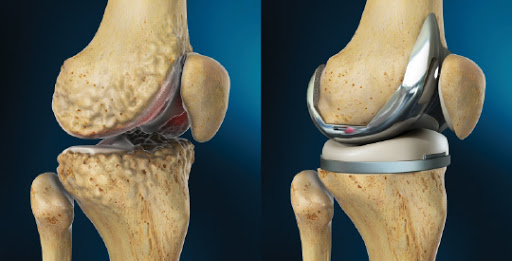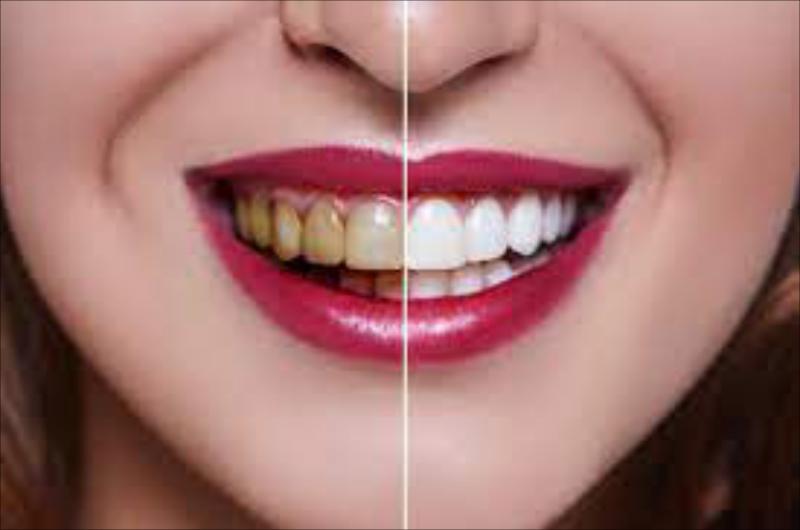About Treatment
The knee joint is the largest joint that provides a person with freedom and ease of movement. The knee joint carries the greatest load in the human body and can be damaged over time or under the influence of external factors.
Unfortunately, conservative medical treatment is sometimes not enough.
In these cases, the rescue of a person is an operation to replace damaged knee - or knee replacement.
Knee replacement surgery can be prescribed when the joint capsule is impaired. In this case, patient begins to feel discomfort during movement, pain and limitation of the amplitude of movements.
Reasons for endoprosthesis may be infraction of the integrity of the cartilaginous joint tissues, as well as adjacent bones, narrowing of the joint space, deformation of the surfaces of the joint, the formation of bone growths (osteophytes) and other reasons.
The aim of the operation is to remove damaged cartilage and bone tissue to a depth of 9 mmvwith the replacement for a specific part of the prosthesis. Endoprosthesis of the knee joint can be the same when all joint surfaces are replaced, or partial when not all elements of the knee joint are replaced.
How is the procedure performed?
The usual duration of an endoprosthesis operation is from 1 to 3 hours. The operation is performed under general or spinal (epidural) anesthesia. During the operation of knee replacement, partial or complete replacement of the damaged joint occurs.
Access to the joint is carried out on the front of the knee (arthrotomy access). Surgeon makes a tissue incision to gain access to the patella. With minimally invasive intervention, the incision is 10-15 cm. With more complex intervention, the incision can reach 20-25 cm.
During the operation, the ligaments and muscles are not damaged or injured. The muscles are pushed apart with special clamps, after which surgeon pushes the patella and examines all parts of the operated part of the knee. The joint is carefully measured using special microsurgical instruments.
The lower part of the femur is cut out and adjusted according to a certain part of the prepared joint prosthesis. Damaged parts of the joint are cut off with special surgical instruments. Surgeon sets up the femoral part of the joint prosthesis.
On the tibia, the damaged parts of the knee joint are removed. Surgeon removes a part of the bone and adjusts it to install the appropriate component of the prosthesis.
Knee prosthesis serves 10-30 years. However, there are cases when prostheses installed in the 70s of the 20th century have successfully servedpatients for 40 years or more, although in quality they are significantly inferior to modern models made of high-tech materials. It mostly depends on the quality of the material used, the technique of the operation, the quality of the rehabilitation, patient's compliance with the recommendations of doctors, patient’s weight, as well as the patient’s lifestyle and activity.
-
Indications
Arthritis
Deforming arthrosis of various origins
Dysplastic arthrosis
Rheumatoid polyarthritis
Post-traumatic arthrosis
OsteoarthritisAseptic necrosis
Ankylosing spondylitis
Congenital malformations of the joint
-
Contraindications
Infection
Purulent-inflammatory diseases of various systems and organs (tonsillitis, sinusitis, cariosis, etc.)
Recent myocardial infarction
Severe cases of stroke
Some forms of diabetes
Renal failure
Oncological diseases
Poor blood coagulation
Vascular thrombosis of the lower extremities
Severe obesity
Mental disorders
-
Recommendations
Do not bend your hip more than 90 degrees
Do not do deep squats, do not perform low bends
For 6 weeks, use walking crutches when walking at home or outdoors
After discharge from clinic, rehabilitation should be continued at home or at a rehabilitation center
If necessary, to treat the suture with antiseptic solutions
Do not stop therapeutic exercises even after a full recovery
Total knee replacement
Partial joint replacement - unicompartmental arthroplasty - partial knee arthroplasty
Revision endoprosthesis - repeated joint replacement
High-quality preparation before surgery for joint replacement helps in the postoperative period and minimizes the risks of rejection of the prosthesis after surgery. To minimize such risks, patient is required to take up physical condition within a few months before the planned operation:
Exclude any infectious processes in the body, having undergone examinations at the ENT specialist, dentist, gynecologist, urologist, and other specialists. Take care of immunity, leading a healthy lifestyle (proper nutrition, walking, etc.). If necessary, you may need to take additional drugs that strengthen immunity.
Regularly engage in gymnastics and physical stress in order to prepare the body for postoperative recovery. If possible, normalize weight, because it can increase the load on the new joint.
Cement fixation
A special bone cement is applied to a specific part of the joint surface. This method can be used for all types of knee replacement. Bone cement material is constantly being improved and increases the long-term performance of the prosthesis.
Cementless fixation
In this case, implants with a textured porous surface are used, which eventually fuses with patient’s own bone tissue. To fix the prosthesis during surgery, screws and pins are used that stabilize the connection of the components until they grow together with the bone. This method of fixation is not suitable for patients with osteoporosis, because the bone is required to be in good condition.
Already on the second day after the endoprosthesis operation, patient can get up on the operated leg without pain and with full load. In hospital, patient must stay from 10 to 15 days. Then they can continue the rehabilitation procedures, staying in clinic or on an outpatient basis.
Continue to use crutches for about 6 weeks. The timing of a full recovery varies from 1,5 to 3 months. The formation of a full joint capsule will take 2-3 months. During this period, after discharge from clinic, patient must follow some simple rules.
This will help to avoid dislocations and complications.











